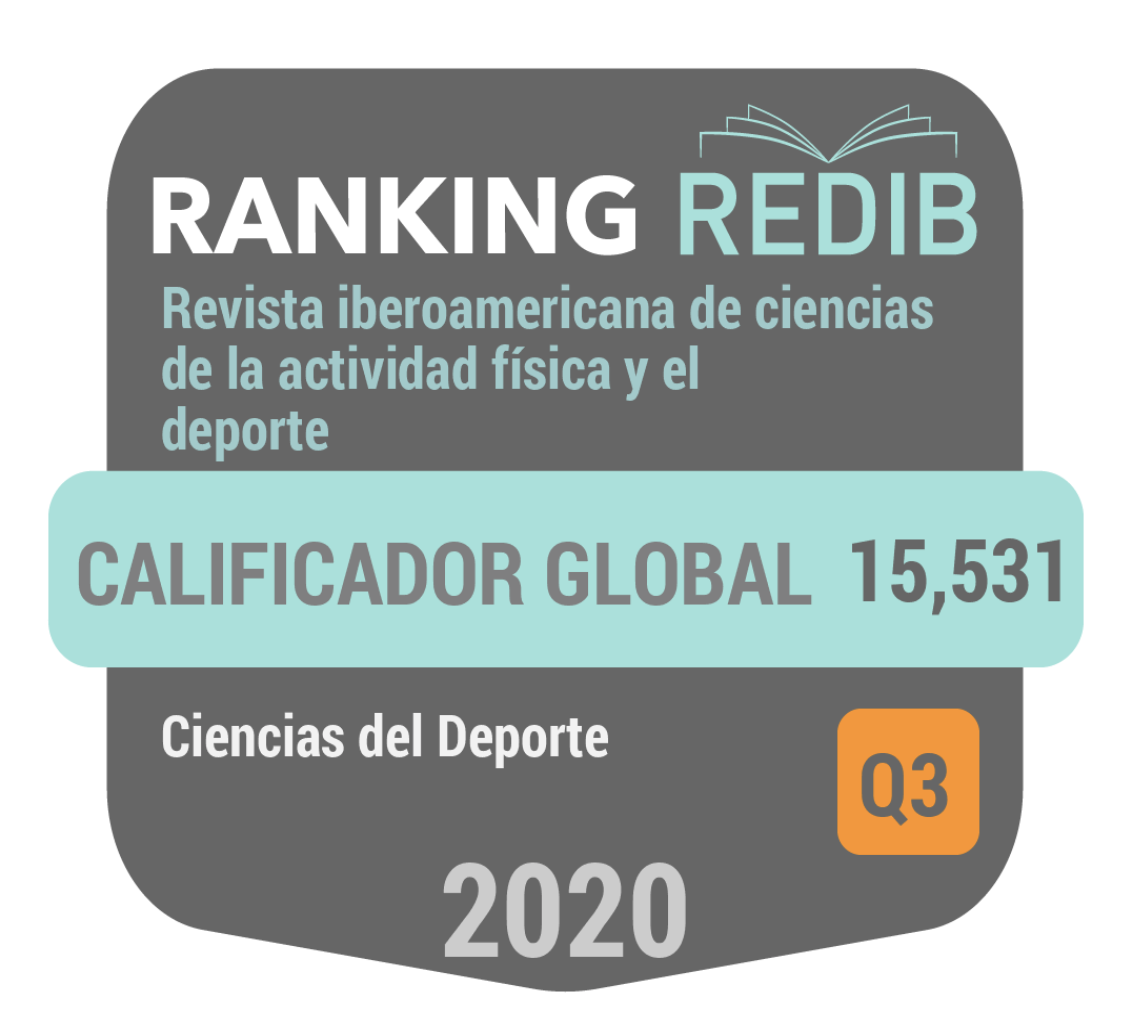Conocimiento del yoga en alumnado adolescente y su perspectiva sobre su inclusión en la Educación Física
DOI:
https://doi.org/10.24310/riccafd.2022.v11i3.15051Palabras clave:
yoga, educación física, adolescentes, educaciónResumen
El yoga ha demostrado ser un ejercicio efectivo para evitar enfermedades físicas y mentales desde las primeras etapas del crecimiento, mejorando, por tanto, la salud de los niños y adolescentes, y, por ende, la salud del adulto. Este estudio tuvo como objetivo conocer el grado de juicio y comprensión por parte de alumnado adolescente sobre la práctica del yoga, así como la perspectiva de estos, sobre la inclusión del yoga en la educación. Se realizó una encuesta anónima a 269 participantes en diferentes institutos de Andalucía (España). El conocimiento por parte de los alumnos adolescentes estudiantes sobre el yoga es muy limitado. Sin embargo, el alumnado consideró relevante la práctica del yoga bien como asignatura optativa o curricular, por lo que, aún el desconocimiento del alumnado adolescente sobre el yoga en general, existió un grado de consciencia en favor de esta actividad en la mejora de la educación
Descargas
Métricas
Citas
Martinez Lillo RI. " Vivir mejor, estar mejor" un PIE en la UMA; 2021.
Eggleston B. The Benefits of Yoga for Children in Schools. Inter J Health, Well & Soc. 2015; 5(3).
Galantino M, Galbavy R, Quinn L. Therapeutic Effects of Yoga for Children: A Systematic Review of the Literature. Pediatr Phyl The. 2008; 20(1): 66-80.
Thompson WR. Worldwide survey of fitness trends for 2022. ACSM's Health Fit. J. 2022; 26(1): 11-20.
Sepúlveda MG. Psicoterapia constructivista evolutiva con niños y adolescentes. Mediterráneo; 2020.
Sánchez NF. Trastornos de conducta y redes sociales en Internet. Salud Ment. 2013; 36(6): 521-527.
Lake AA, Mathers JC, Rugg-Gunn AJ, Adamson AJ. Longitudinal change in food habits between adolescence (11–12 years) and adulthood (32–33 years): the ASH30 Study. J Public Health. 2006; 28(1): 10-16.
Telama R. Tracking of physical activity from childhood to adulthood: a review. Obes Facts, 2009; 2(3): 187-195.
Birdee GS, Yeh GY, Wayne PM, Phillips RS, Davis RB, Gardiner P. Clinical Applications of Yoga for the Pediatric Population: A Systematic Review. Acad Pediatr. 2009; 9(4): 212-220.
Zoogman S, Goldberg SB, Hoyt WT, Miller L. Mindfulness Interventions with Youth: A Meta-Analysis. Mindfulness. 2015; 6: 290–302.
Kallapiran K, Koo S, Kirubakaran R, Hancock K. Effectiveness of mindfulness in improving mental health symptoms of children and adolescents: a meta-analysis. Child Adolesc Ment Health. 2015; 20(4): 182-194.
Nanthakumar C. The benefits of yoga in children. J Integr Med. 2018; 16(1): 14-19.
Khalsa SBS, Butzer B. Yoga in school settings: a research review. Ann N Y Acad Sci. 2016; 1373(1): 45-55.
Butzer B, Bury D, Telles S, Khalsa SBS. Implementing yoga within the school curriculum: A scientific rationale for improving social-emotional learning and positive student outcomes. J Child Serv. 2016; 21;11(1):3–24.
Harter S. Desarrollo de la personalidad y de la identidad. Antología de lecturas, 2006; 45.
Iyengar. La esencia del yoga. Barcelona: Kairós; 2010.
World Medical Association. World Medical Association Declaration of Helsinki: ethical principles for medical research involving human subjects. JAMA. 2013; 310(20):2191-4.
Ross A, Friedmann E, Bevans M, Thomas S. National survey of yoga practitioners: mental and physical health benefits. Complement Ther Med. 2013; 21(4):313-323.
Centeio EE, Whalen L, Thomas E, Kulik N, McCaughtry N. (2017). Using yoga to reduce stress and bullying behaviors among urban youth. Health. 2017; 9(3):409-424.
Olabe N, Pereira C. The benefits of yoga and meditation for learning a musical instrument. NTQR. 2020; 2:121-38.
Nicolás GV, Ortín NU, López MG, Vigueras JC. (2010). La danza en el ámbito de educativo. Retos. 2010; (17):42-45.
Olivero EC. Hijas del sueño olímpico: Crónicas del equipo nacional de Gimnasia Artística Deportiva femenino. Editorial Libros.com; 2019
Descargas
Publicado
Cómo citar
Número
Sección
Licencia
Todos los contenidos publicados en Revista Iberoamericana de Ciencias de la Actividad Física y el Deporte están sujetos a la licencia Creative Commons Reconocimento-NoComercia-Compartirigual 4.0 cuyo texto completo puede consultar en <http://creativecommons.org/licenses/by-nc-sa/4.0>

Se pueden copiar, usar, difundir, transmitir y exponer públicamente, siempre que:
- Se cite la autoría y la fuente original de su publicación (revista, editorial y URL de la obra).
- No se usen para fines comerciales.
- Se mencione la existencia y especificaciones de esta licencia de uso.
Los derechos de autor son de dos clases: derechos morales y derechos patrimoniales. Los derechos morales son prerrogativas perpetuas, irrenunciables, intransferibles, inalienables, inembargables e imprescriptibles.
De acuerdo con la legislación de derechos de autor, Revista Iberoamericana de Ciencias de la Actividad Física y el Deporte reconoce y respeta el derecho moral de los autores/as, así como la titularidad del derecho patrimonial, el cual será cedido a la Universidad de Málaga para su difusión en acceso abierto.
Los derechos patrimoniales, se refieren a los beneficios que se obtienen por el uso o divulgación de las obras. Revista Iberoamericana de Ciencias de la Actividad Física y el Deporte se publica en open access y queda autorizada en exclusiva para realizar u autorizar por cualquier medio el uso, distribución, divulgación, reproducción, adaptación, traducción o transformación de la obra.
Es responsabilidad de los autores/as obtener los permisos necesarios de las imágenes que están sujetas a derechos de autor.
















9.png)
